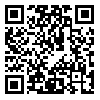Volume 7, Issue 1 (2016)
LRR 2016, 7(1): 215-235 |
Back to browse issues page
Download citation:
BibTeX | RIS | EndNote | Medlars | ProCite | Reference Manager | RefWorks
Send citation to:



BibTeX | RIS | EndNote | Medlars | ProCite | Reference Manager | RefWorks
Send citation to:
Vaezi H. Obligatory Adjuncts in Persian. LRR 2016; 7 (1) :215-235
URL: http://lrr.modares.ac.ir/article-14-11063-en.html
URL: http://lrr.modares.ac.ir/article-14-11063-en.html
Assistant Professor of Linguistics, Islamic Azad University, Rasht, Gilan, Iran
Abstract: (4869 Views)
This paper will examine (non) presence of obligatory adjuncts in predication and modification constructions in Persian language. The aim is to show that adjuncts are not optional as opposed to the previous thoughts. They are necessary for some conversational utterances The hypothesis is the predication and modifications following pragmatic considerations and focal requirement can be understood better. However, the comprehensive and uniform explanation is not achieved by grammatical and event-based analysis. The presense of obligatory adjuncts are necessary to satisfy focal requirement. On the basis of focal requirement, every utterance must contain a focus, and provide new information to the addressee in discourse context. This focal requirement can be satisfied through various factors; one of them is obligatory adjuncts. This pragmatic constraint derived from Grice's maxim of Quantity or Horn's R -principle. This study displays that the main motivation of the presence of obligatory adjuncts is focal requirement. So every utterance must be informative. Utterances normally need a successful focus that conveys something asserted. Thus the predications(short passives) and modifications with obligatory adjuncts can be understood better in discourse context.
Keywords: Obligatory adjuncts, Accomplishments, Event structure, Focal requirement, Quantity principle
| Rights and permissions | |
 |
This work is licensed under a Creative Commons Attribution-NonCommercial 4.0 International License. |






